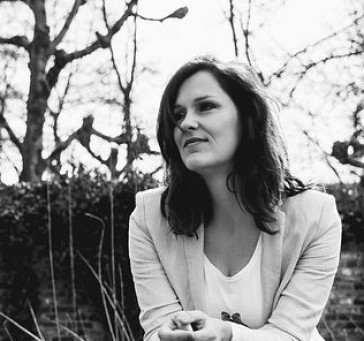Voor u ligt de voorlichtingspublicatie "Hoogtemperatuursolderen". Deze publicatie is bedoeld voor allen die te maken hebben of te maken krijgen met de techniek van het hoogtemperatuursolderen. Daarbij moet worden gedacht aan bijvoorbeeld constructeurs, ontwerpers, lastechnici, werkvoorbereiders, enzovoorts. Deze voorlichtingspublicatie is een update van de in 1992 verschenen eerste druk die indertijd onder auspiciën van de NIL-werkgroep van de Technische Commissie I-A Subcie Hoogtemperatuursolderen is opgesteld. De updating was noodzakelijk, daar zich in de afgelopen jaren een groot aantal ontwikkelingen heeft voorgedaan op het gebied van soldeertechnieken.
DOCUMENT

Deze publicatie is samengesteld door de werkgroep "Vonkerosie" van de vereniging FME-CWM en geeft gerichte theoretische en praktische informatie ten behoeve van respectievelijk de gebruikers van vonkerosiemachines, geïnteresseerden in vonkerosietechnieken, alsmede voor technische cursussen en opleidingen. Er bestaat een intensieve samenwerking met de "Contactgroep Fysisch Chemisch Bewerken (CFC)" van de Vereniging voor Produktietechniek - VPT. De inhoud van deze publicatie behandelt met name alle aspecten welke voor het vonkeroderen van belang zijn. Deze publicatie vervangt de voorlichtingspublicaties VM 76 "Zinkvonkerosie", VM 77 "Draadvonkerosie" en VM 79 "Numeriek bestuurd zinkvonken".
DOCUMENT

De eerste uitgave van deze publicatie is in 1996 samengesteld door de werkgroep "Buigen van dunne plaat" en geeft gerichte theoretische en praktische informatie ten behoeve van respectievelijk de gebruikers van het buigproces, geïnteresseerden in dit proces, technische cursussen en opleidingen. In 2009 is deze publicatie aangepast aan de huidige stand der techniek. De inhoud van deze publicatie behandelt de aspecten welke voor het vormgeven van plaat door middel van buigen van belang zijn. De achterin toegevoegde supplementen over materialen en over machines en gereedschappen geven processpecifieke informatie over de desbetreffende onderwerpen. In de voorlichtingspublikaties VM 111 "Materialen" en VM 112 "Machines en gereedschappen" worden de algemene gegevens over deze onderwerpen behandeld.
DOCUMENT

We produceren en consumeren meer mode dan we nodig hebben, met te veel impact op mens en milieu. Mode aankopen zijn vaak impulsief en worden ter plekke, in de winkel besloten. Daar ligt dus een kans, maar wanneer gaan we als consument vaker voor duurzame mode kiezen, en hoe kunnen duurzame mode retailers ons daartoe verleiden?

ONDERZOEKSVRAAG - Welke aanbevelingen kunnen worden gegeven voor interventies en strategieën vanuit het perspectief van thuiswonende ouderen, mantelzorgers en professionals, ter voorkoming/vermindering van kwetsbaarheid bij thuiswonende ouderen als gevolg van maatregelen tijdens een (toekomstige) pandemie? URGENTIE - Er is behoefte aan kennis over de effecten van de Corona-pandemie op ouderen. Aanbevelingen voor interventies en strategieën zijn nodig om op korte termijn te kunnen worden ingezet tegen negatieve effecten van de Corona-pandemie op korte en langere termijn, specifiek voor thuiswonende ouderen met (risico op) kwetsbaarheid. HYPOTHESE - Door verwachte negatieve effecten van de Corona-pandemie op o.a. welbevinden en leefstijl is de verwachting dat kwetsbaarheid bij thuiswonende ouderen en daarmee het risico op negatieve gezondheidsuitkomsten toeneemt. PLAN VAN AANPAK – Inzicht in prevalentie en determinanten van kwetsbaarheid voor, tijdens en na de Corona-pandemie van thuiswonende ouderen wordt verkregen met kwantitatief onderzoek onder ruim 11.000 Lifelines deelnemers (65 jaar of ouder) in de drie noordelijke provincies. Kwalitatief onderzoek wordt uitgevoerd naar ervaringen, knelpunten en behoeften van ouderen, mantelzorgers, professionals uit de thuiszorg en publieke gezondheid. Op basis van analyse van zowel de kwantitatieve data, kwalitatieve data en publieke gezondheidsoverwegingen wordt integraal perspectief verkregen op kwetsbaarheid en het omgaan met Corona-maatregelen vanuit principes van waardegedreven zorg. Aanbevelingen voor persoons- en groepsgerichte interventies en strategieën tijdens een (toekomstige) pandemie voor thuiswonende ouderen worden in co-creatie ontwikkeld voor ouderen, professionals en beleidsmakers in de eerstelijnszorg en het publieke domein. De co-creatie vindt plaats met ouderen, mantelzorgers, (thuis)zorgorganisaties, RIVM, GGD-en en gemeenten.